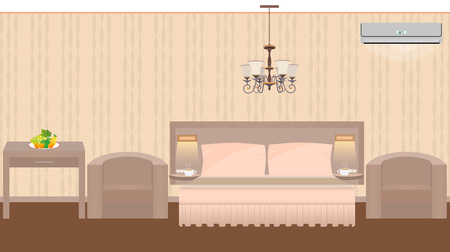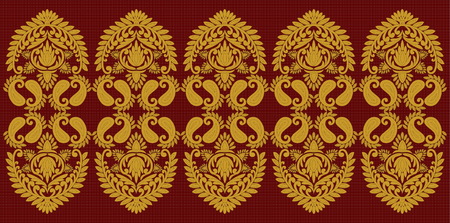Introduction: The Enduring Allure of British Historical Interiors
Step inside a historic British house, and you are immediately enveloped by an atmosphere rich with character, artistry, and stories from centuries past. These homes—from stately Georgian manors to charming Victorian terraces—exude a unique charm that is unmistakably British. A defining feature of these interiors is their use of wallpaper: not merely as decoration, but as a statement of style, status, and personality. Over generations, wallpaper design in Britain has evolved into an art form, reflecting the prevailing tastes, technological advancements, and social aspirations of each era. In this exploration of historic British houses and their iconic wallpaper designs, we delve into how these intricate patterns and palettes have become woven into the very fabric of the nation’s interior spaces, shaping the way Britons experience their homes and heritage.
2. A Journey Through Eras: Wallpaper Across Georgian, Victorian, and Edwardian Homes
British homes have long been a canvas for evolving wallpaper artistry, reflecting the grandeur and tastes of each architectural era. From the restrained elegance of Georgian manors to the lavish layers of Victorian townhouses and the refined charm of Edwardian villas, wallpaper design has played a pivotal role in defining the character of historic British interiors. Let’s embark on a journey through these distinct periods, comparing how wallpaper trends transformed the look and feel of everything from stately manor halls to cosy country cottages.
Georgian Era (1714–1837): Understated Sophistication
During the Georgian period, interiors were marked by symmetry and classical influences. Wallpapers commonly featured subtle damasks, delicate florals, or hand-painted chinoiserie motifs in muted hues. Typically reserved for reception rooms or grand entrance halls, these designs exuded quiet refinement rather than ostentation. Linen-backed papers were prized for their durability, while block printing allowed for intricate yet orderly patterns suited to the era’s measured aesthetic.
Victorian Era (1837–1901): Opulence and Ornate Details
The Victorian age ushered in a golden era for wallpaper innovation. With advances in mass production, intricate patterns became widely accessible, gracing both urban terraces and rural retreats. Bold colours, rich textures like flocking or embossing, and lush botanical or Gothic Revival motifs dominated drawing rooms and parlours. Layered with heavy drapery and decorative trims, wallpapers were a symbol of status and personal taste—a true hallmark of Victorian domestic style.
Edwardian Era (1901–1910): Lightness and Modernity
The turn of the 20th century brought a breath of fresh air to British interiors. Edwardian wallpapers embraced lighter colours, airy floral trails, and Art Nouveau influences. Pastels replaced deep jewel tones; stylised nature-inspired forms added a sense of movement and grace. In both suburban villas and classic cottages, walls became brighter and more inviting—reflecting a shift toward modern comfort while retaining echoes of heritage sophistication.
Comparative Table: Wallpaper Trends Across Three Eras
| Era | Main Features | Common Motifs | Typical Colour Palette |
|---|---|---|---|
| Georgian | Subtle elegance, classical symmetry | Damask, florals, chinoiserie | Pale blues, sage greens, soft creams |
| Victorian | Rich textures, ornate details | Botanicals, Gothic revival, flocked patterns | Burgundy, golds, forest greens |
| Edwardian | Lighter mood, modern influences | Art Nouveau florals, trailing vines | Pale pinks, light blues, off-whites |
The Enduring Allure of Historic Wallpaper Designs
The story of British wallpaper is one of adaptation—balancing opulent display with everyday comfort as tastes shifted over centuries. Whether gracing grand staircases or humble cottage parlours, these iconic designs continue to inspire today’s interiors with their beauty and craftsmanship.

3. Iconic Motifs and Patterns: From Chinoiserie to William Morris
British wallpaper design is a captivating tapestry woven from centuries of artistry, global influence, and social change. Among the most celebrated motifs to grace historic British houses, Chinoiserie stands as an early testament to Britain’s fascination with the exotic. Emerging in the 18th century, these designs—featuring whimsical pagodas, delicate florals, and enchanting birds—brought a romanticised vision of the East into stately homes such as Kew Palace and Brighton Pavilion. Their intricate storytelling and opulent colour palettes remain cherished by enthusiasts of period interiors.
The Victorian era ushered in a golden age for wallpaper innovation. It was during this period that William Morris, perhaps Britain’s most renowned designer, redefined wall coverings with his rich, nature-inspired patterns. Morris & Co.’s “Strawberry Thief” and “Willow Boughs” are enduring icons, embodying a sense of harmony between art and environment. These designs—characterised by their hand-drawn botanical forms and earthy hues—can still be found in heritage homes like Standen House, reflecting Morris’s belief that beauty should enrich everyday life.
Beyond Morris, names like Augustus Pugin and Owen Jones contributed bold geometric patterns and Gothic Revival flourishes that transformed aristocratic interiors. Pugin’s designs for the Houses of Parliament married history with modernity, while Jones’s “Grammar of Ornament” inspired generations of designers with its systematic approach to pattern language.
These iconic wallpapers were more than mere decoration—they projected status, taste, and identity throughout British society. The pattern language developed across centuries continues to leave its mark on contemporary interiors, where echoes of Chinoiserie whimsy or Morrisian flora bring timeless character to even the most modern spaces.
4. Craftsmanship and Materiality: Traditional Printing Techniques
The soul of historic British houses is often revealed through the meticulous artistry found in their wallpaper designs. The legacy of British interiors owes much to time-honoured techniques, where every roll tells a story of craftsmanship, tradition, and material innovation.
Hand-Block Printing: Artistry in Every Imprint
Hand-block printing is a centuries-old technique that defined the walls of stately homes across Britain. This painstaking method involves pressing intricately carved wooden blocks dipped in natural dyes onto paper, creating repeating patterns with subtle variations that add depth and charm. The human touch ensures each sheet is unique—a testament to the artisan’s skill and patience.
Flock Wallpapers: Texture and Opulence
Equally iconic are flock wallpapers, which reached their peak popularity during the Georgian and Victorian eras. Flocking involves applying powdered wool or silk fibres onto adhesive-coated paper, producing a luxurious velvety surface. This tactile finish became synonymous with opulence, lining drawing rooms and grand staircases with patterns inspired by damask fabrics or botanicals.
Natural Pigments: A Timeless Palette
The distinctive hues seen in traditional British wallpapers often originate from natural pigments. Sourced from minerals, plants, and even insects, these colours offer a richness and authenticity rarely matched by modern synthetics. Ochres, indigos, and verdigris created palettes that harmonised with antique furniture and architectural detailing.
Traditional Wallpaper Techniques at a Glance
| Technique | Description | Era Prominence | Signature Effect |
|---|---|---|---|
| Hand-Block Printing | Wooden blocks pressed with natural dyes for intricate patterns | 17th–19th Century | Subtle variations; artisanal uniqueness |
| Flock Wallpaper | Powdered fibres applied to adhesive for texture | Georgian & Victorian Era | Velvet-like feel; deep luxury |
| Natural Pigments | Pigments sourced from minerals/plants for colouring | Tudor onwards | Rich, earthy tones; authenticity |
The combination of these traditional techniques has ensured that wallpaper in historic British houses is not merely decorative—it is a celebration of artistry and heritage. Each wall becomes a canvas where craftsmanship meets storytelling, connecting contemporary admirers with generations past.
5. Wallpaper as a Statement of Identity and Status
In historic British houses, wallpaper was far more than mere decoration—it served as a silent yet expressive testament to the homeowner’s identity, regional roots, and social standing. Throughout the 18th and 19th centuries, the choice of wallpaper was an intentional act, carefully curated to communicate wealth, taste, and aspirations within the rigid hierarchies of British society.
Reflecting Social Status Through Opulence
Wallpaper selections in grand manor houses and stately homes were often lavish and elaborate, featuring imported Chinoiserie, hand-painted panoramas, or flocked velvet textures. These patterns were not just visually striking; they signified affluence, cosmopolitan sensibilities, and access to global trade. The ability to commission bespoke designs or use rare pigments was a luxury reserved for the upper echelons of society, making wallpaper a subtle status symbol akin to silverware or fine art collections.
Regional Identity in Pattern and Palette
Beyond class distinction, wallpaper became a canvas for expressing regional pride and heritage. In Northern England, for instance, wallpapers might incorporate motifs inspired by local flora or industrial progress—paying homage to the surrounding landscape or emerging economic power. In Scotland, tartan patterns or thistle-themed designs echoed national identity. These choices imbued interiors with a sense of place, rooting even the most cosmopolitan households in their native soil.
Aspirations Embodied in Design
For many homeowners, especially those rising in social ranks during the Industrial Revolution, wallpaper represented ambition and aspiration. Middle-class families would emulate aristocratic tastes by choosing patterns reminiscent of those seen in royal residences or fashionable London townhouses. The latest trends from designers like William Morris were embraced not just for their beauty but for their association with progressive ideals and refined living. Thus, wallpaper became both a marker of achieved success and a declaration of future hopes—a visual narrative woven into the very fabric of British domestic life.
6. Preservation and Revival: Keeping Heritage Wallpaper Alive
The rich tapestry of British wallpaper design is not just an aesthetic legacy but a cherished element of the nation’s cultural heritage. In recent years, there has been a growing movement to preserve original wallpapers in historic houses, driven by both conservation specialists and passionate homeowners. Modern conservation methods have become increasingly sophisticated, employing techniques such as micro-encapsulation cleaning, digital pattern recreation, and reversible restoration adhesives to stabilise delicate surfaces while retaining authenticity.
Innovative Restoration Techniques
Conservationists today blend traditional craftsmanship with state-of-the-art technology. Archival research informs colour-matching and pattern replication, while digital scanning allows for precise recreation of faded or fragmented motifs. These approaches ensure that even the most intricate Georgian damasks or Victorian florals can be revived in situ, maintaining their narrative within the context of the building’s history.
The Contemporary Resurgence
Beyond museum-like preservation, British homes are experiencing a renaissance of heritage-inspired wallpaper. Designers reinterpret classic patterns—think William Morris botanicals or Regency stripes—using eco-friendly inks and sustainable materials suited to modern living. This revival is not mere nostalgia; it reflects a broader appreciation for craftsmanship, storytelling, and a sense of place. Homeowners embrace these designs to infuse character into both period properties and contemporary spaces, celebrating the enduring allure of British decorative arts.
Bridging Past and Present
Ultimately, the ongoing preservation and creative revival of historic wallpapers ensure that these iconic designs remain alive and relevant. Through careful stewardship and imaginative adaptation, Britain’s wallpaper heritage continues to inspire—and to set the tone for stylish interiors with a profound sense of history.


